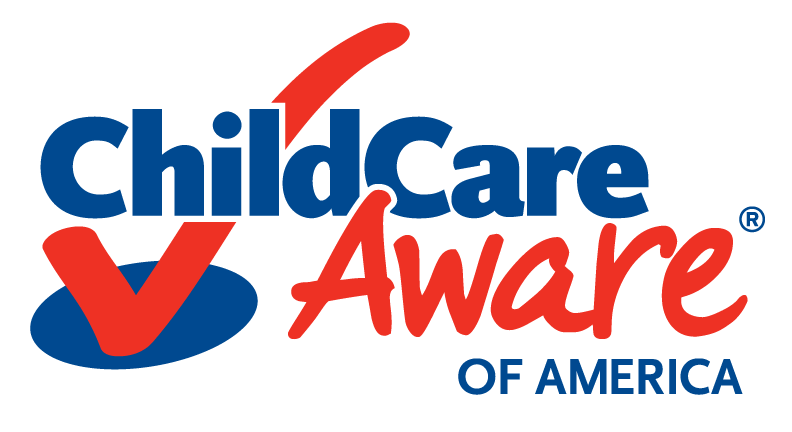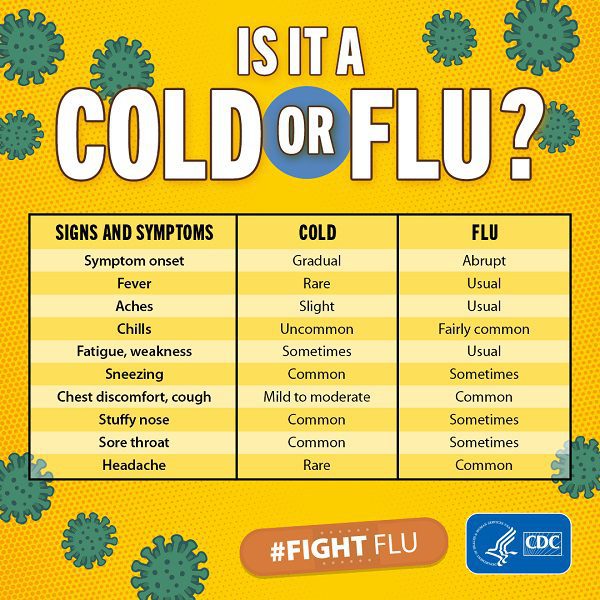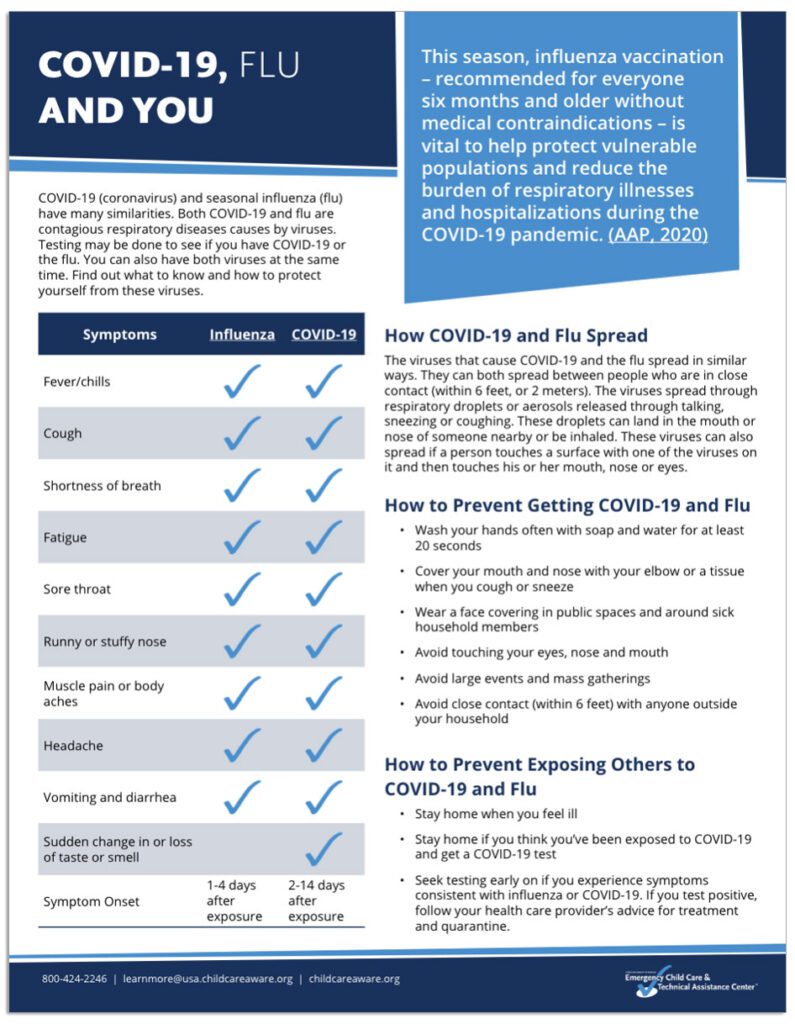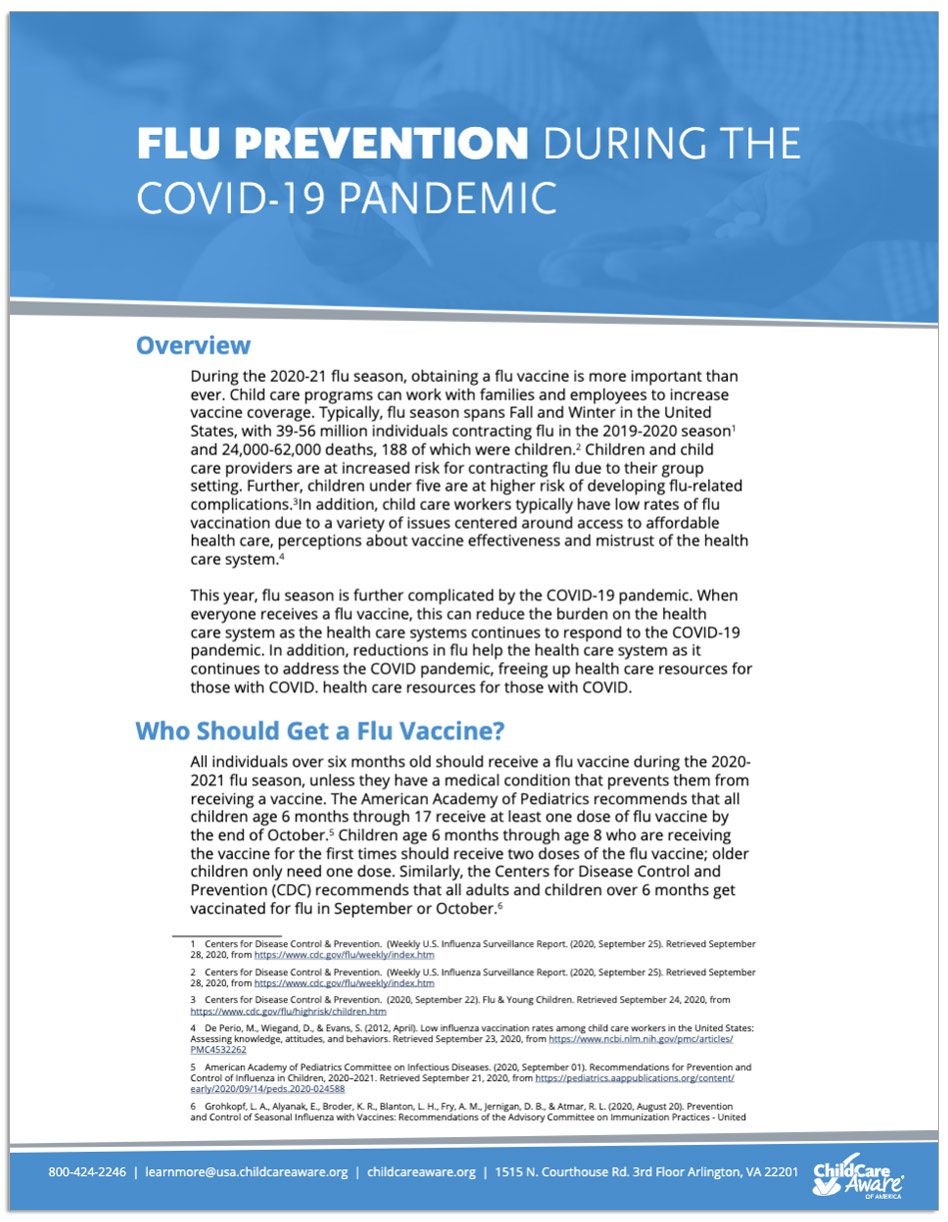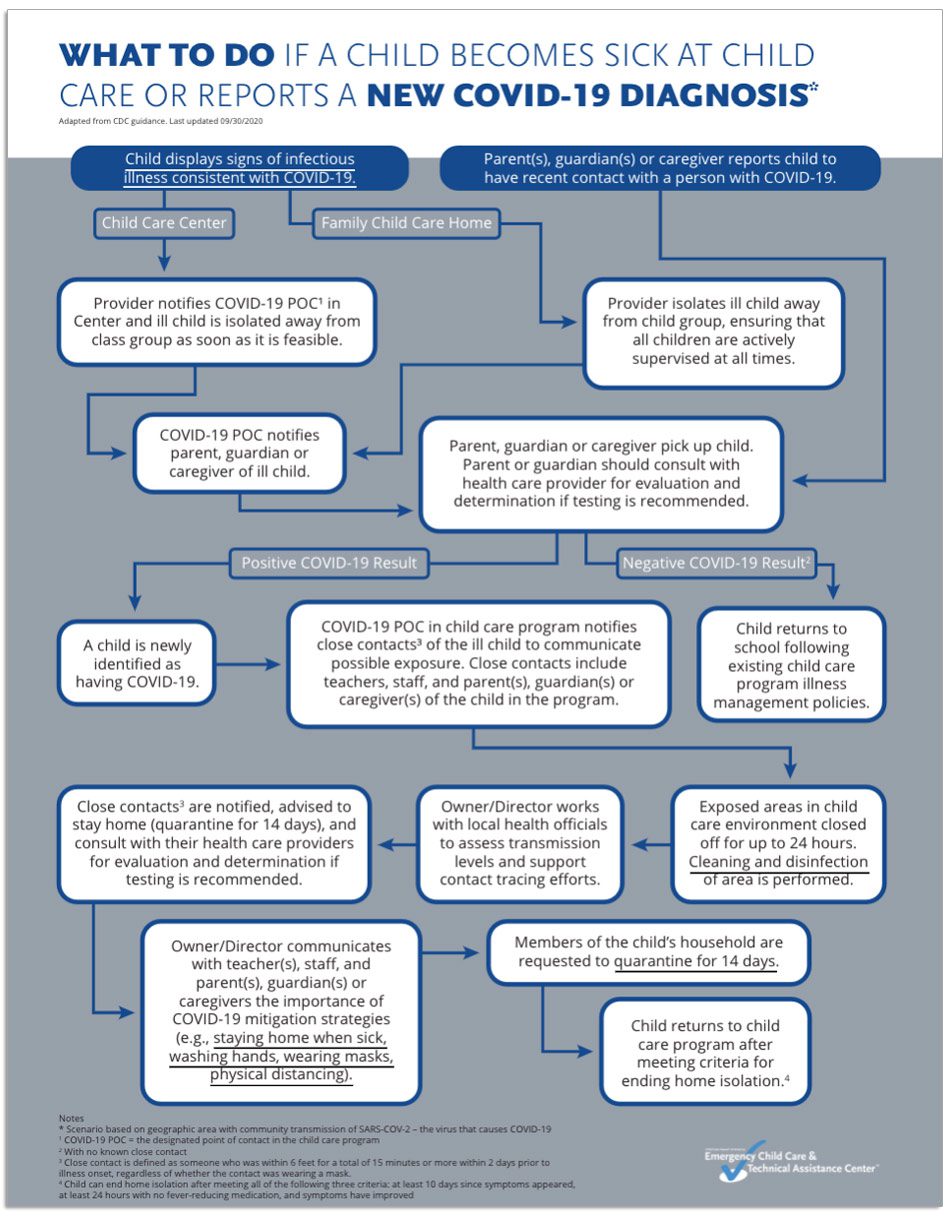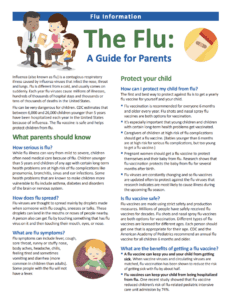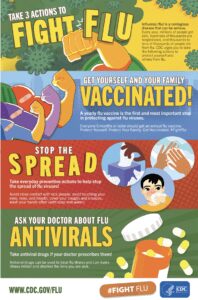Influenza, commonly referred to as seasonal flu or flu, is a contagious respiratory illness caused by a virus. Influenza is highly contagious, and cases can range from mild to severe. Young children are among those at risk for serious flu complications. Flu is more dangerous than the common cold.
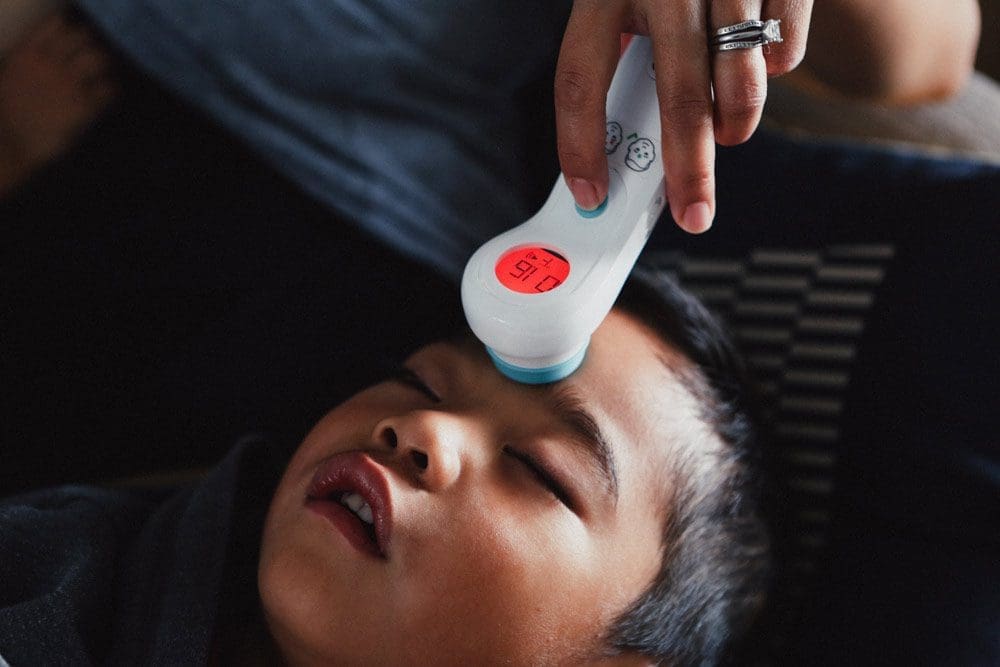
According to the Centers for Disease Control and Prevention (CDC), the best way to prevent flu is by getting vaccinated each year. Child care providers should also encourage healthy habits for all adults and children to help prevent the flu.
Is it a cold or the flu?
The common cold is also a respiratory illness, but it is caused by a different virus than flu. They share common symptoms, but flu is usually worse and more intense. A detailed list of flu symptoms can be found on the CDC website. Colds do not lead to serious health problems as often as flu can. The CDC offers resources to help you determine if an illness is a cold or the flu.
Differences Between Flu and COVID-19
COVID-19 is also a respiratory illness that is caused by a different virus than Flu. The symptoms of both are similar, which can make it difficult to tell the difference. Testing may be needed to confirm a diagnosis.
Download the COVID-19, Flu and You flyer below.
Flu Season
Seasonal flu cases can be found year-round in the United States but fall and winter are the most common times for flu viruses. Flu season is different every year and it is impossible to know when it will start. Flu activity tends to increase in October. Follow media coverage or check with your local health department to find out when an outbreak is happening in your community. The CDC also offers a map that shows current influenza activity. Flu activity tends to peak between December and February.
Download Flu Prevention During the COVID-19 Pandemic resource.
Flu Prevention During the COVID-19 Pandemic Microwebinar
Learn about the importance of flu prevention in child care programs, presented by:
- Nicole Garro, Director of Early Childhood Health Programs at CCAoA
- Dr. Pam Shaw, MD, FAAP
- Dr. Amy Shriver, MD, FAAP
Flu Prevention for Families Microwebinar
Hear what families, including pregnant women, need to know about staying safe during the 2020-2021 flu season. Presented by:
- Nicole Garro, Director of Early Childhood Health Programs at CCAoA
- Jocelyn Slaughter, MD, FACOG
- Krystal Adams, MSN, GNP-BC, WCC
Preventing the Flu
The CDC has suggestions for helping to prevent the flu and stop the spread of germs.
- Get a flu vaccine.
- Avoid close contact with people who are sick.
- Stay home when you are sick.
- Cover your mouth and nose when coughing or sneezing. Encourage children in your program to do the same.
- Wash your hands often.
- Avoid touching your eyes, nose, or mouth. Encourage children to avoid this as well.
- Clean and disinfect frequently touched surfaces as well as following other healthy habits.
These precautionary measures help prevent COVID-19 and colds as well.
Understanding how flu spreads is also helpful when it comes to prevention.
When to Exclude Ill Children from Child Care
Child care providers should have policies in place for excluding ill children from their programs. This includes policies for when children become ill while in care, and when parents need to keep their children home due to specific symptoms. States may also have specific guidelines about when to exclude children. Your state may also have a policy for when you need to report an illness so be sure you are aware of those requirements as well.
Download the flowchart on What to Do if a Child Becomes Sick at Child Care (PDF).
Other Resources
- Flu and COVID-19 Professional Development Slides (PowerPoint) – CCAoA
- Talking to Families about Flu Prevention Blog Post & Microwebinar – CCAoA
- What Child Care Providers Need to Know about Preventing the Flu Blog Post – CCAoA
- Flu Discussion on Instagram Live – CCAoA
- CDC Digital Media Toolkit: 2022-2023 Flu Season
- School & Child Care – CDC
- Preventing the Flu: Resources for Parents & Child Care Providers – Healthy Children
- Reducing the Spread of Illness in Child Care – Healthy Children


